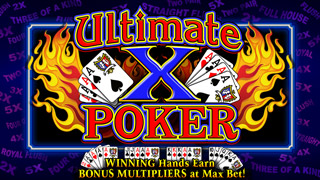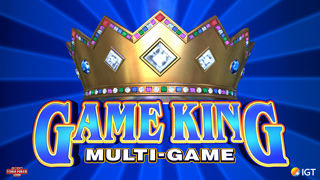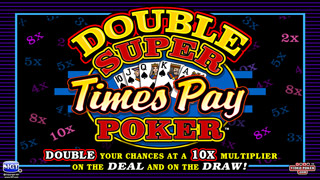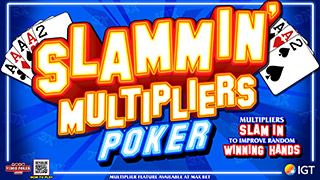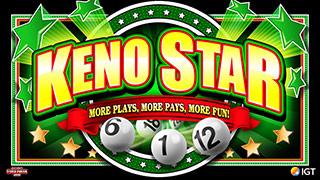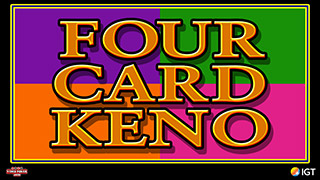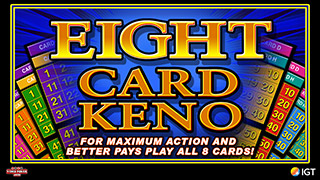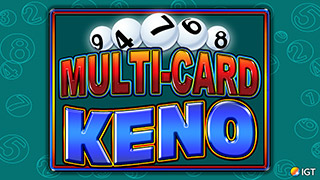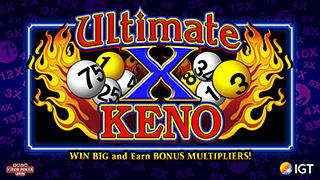sequential royal strategy
-
ggetit
- Forum Newbie
- Posts: 3
- Joined: Thu May 22, 2025 4:31 pm
sequential royal strategy
i cant seem to find a calculator that uses sequential royal strategy... how can i know how to play a perfect sequential royal strategy vs a normal strategy?
assuming there is much playing differences, id guess in a game like (kings+) joker poker, normal strat looking like this:
2 Pair
3 to a Natural Royal Flush TJQ
1 Pair KK
3 to a Natural Royal Flush TJK; TQK; JQK
1 Pair AA
3 to a Natural Royal Flush TJA; TQA; TKA; JQA; JKA; QKA
there might be deviations in hands like Ts Js Qs Jc Qd since we have the first 3 cards being a potential seq. royal. how can i know if the hold here is TJQ or JJQQ and know the cost between the two holds?
im looking for a COMPUTER PERFECT ANALYZER for sequential royal games.
side note, how much difference is there in a sequential royal game of say joker poker (kings+) vs a normal royal game? obviously this is known by inputting into a house edge calculator, but i mean if you make 0 deviations vs trying to play computer perfect sequential strategy, what difference in edge would that make?
i dont see anywhere on this site how to play sequential royal strategies
assuming there is much playing differences, id guess in a game like (kings+) joker poker, normal strat looking like this:
2 Pair
3 to a Natural Royal Flush TJQ
1 Pair KK
3 to a Natural Royal Flush TJK; TQK; JQK
1 Pair AA
3 to a Natural Royal Flush TJA; TQA; TKA; JQA; JKA; QKA
there might be deviations in hands like Ts Js Qs Jc Qd since we have the first 3 cards being a potential seq. royal. how can i know if the hold here is TJQ or JJQQ and know the cost between the two holds?
im looking for a COMPUTER PERFECT ANALYZER for sequential royal games.
side note, how much difference is there in a sequential royal game of say joker poker (kings+) vs a normal royal game? obviously this is known by inputting into a house edge calculator, but i mean if you make 0 deviations vs trying to play computer perfect sequential strategy, what difference in edge would that make?
i dont see anywhere on this site how to play sequential royal strategies
-
onemoretry
- Video Poker Master
- Posts: 3096
- Joined: Tue Mar 03, 2009 8:00 pm
-
atomic2025
- Forum Regular
- Posts: 55
- Joined: Sun Jan 12, 2025 4:02 pm
Yeah, it's not that hard to calculate a specific dealt hand. But also he needs to consider the reverse seq royal, because seq royal pays both ways.onemoretry wrote: ↑Thu May 22, 2025 7:02 pmCouldn't you work it out yourself, based on all the possible outcomes of each hold, and their values?
However, the calculator works solely based on combination rather than permutation. To calculate the game's return and strategy and accurately determining the holding for a sequential royal for every dealt hand and all possible ways of drawing for replaced cards requires the computational power of a quantum computer.
-
Tedlark
- Video Poker Master
- Posts: 8765
- Joined: Mon Oct 02, 2006 12:29 am
Or, New2vp's brain.atomic2025 wrote: ↑Thu May 22, 2025 11:33 pmTo calculate the game's return and strategy and accurately determining the holding for a sequential royal for every dealt hand and all possible ways of drawing for replaced cards requires the computational power of a quantum computer.onemoretry wrote: ↑Thu May 22, 2025 7:02 pmCouldn't you work it out yourself, based on all the possible outcomes of each hold, and their values?
-
tech58
- Video Poker Master
- Posts: 1459
- Joined: Tue Mar 11, 2014 1:21 pm
-
ggetit
- Forum Newbie
- Posts: 3
- Joined: Thu May 22, 2025 4:31 pm
how do we know if the reverse sequential royal pays as well? the rules do not state that, it just says "sequential royal"... is it standard that the reverse sequential also pays?atomic2025 wrote: ↑Thu May 22, 2025 11:33 pmYeah, it's not that hard to calculate a specific dealt hand. But also he needs to consider the reverse seq royal, because seq royal pays both ways.onemoretry wrote: ↑Thu May 22, 2025 7:02 pmCouldn't you work it out yourself, based on all the possible outcomes of each hold, and their values?
However, the calculator works solely based on combination rather than permutation. To calculate the game's return and strategy and accurately determining the holding for a sequential royal for every dealt hand and all possible ways of drawing for replaced cards requires the computational power of a quantum computer.
-
ggetit
- Forum Newbie
- Posts: 3
- Joined: Thu May 22, 2025 4:31 pm
also, how can the wizard of odds calculate exact house edge in this game within seconds but the strategy is so hard to come up with??
-
New2vp
- Video Poker Master
- Posts: 1878
- Joined: Mon Sep 11, 2006 4:02 am
I don't have much practical experience with sequential royal flushes; however, most of what I have read suggests that a common payment is often 50,000 coins for "reversible" royals, which pay the larger amount for either sequence 10-J-Q-K-A or A-K-Q-J-10. I imagine that the payment convention is spelled out on the paytable of the specific machine involved.
I agree with atomic2025 that the computations would a bit slower if all permutations were required, but there are several shortcuts that can be employed that allow the optimal holds and expected values to be determined in a time only slightly longer than that needed to evaluate the same without sequential royals. You may recognize some of these when reading the article referenced below.
I'm not certain when Bob Dancer authored what is hyperlinked below, but it may very well have been 20 years ago. It contains a very good guide showing how to modify a standard strategy table to take sequential royals into consideration. Prior to finding this article, I did many of the same calculations (and a few more) and I agree with Mr. Dancer's rounded numbers. I remember finding it interesting that the add-on for holding a singleton queen in the 3rd position is double the add-on for holding a singleton ace, king, jack, or even ten in position ... if the paytable is dealing with reversible royals. Of the possible 24 permutations when starting with a single card in sequential position, usually only 1 of those permutations will give you the sequential royal. So, the calculation of the add-on goes something like this:
(1/24) x (1/178,365) x (50,000 - 4000) = 0.0107 coins
However, when holding a queen there are 2 permutations that work: both orders AKJT and TJKA provide the jackpot, thus making the add-on calculation to be:
(2/24) x (1/178,365) x (50,000 - 4000) = 0.0215 coins (Both calculations are rounded to 4 places.)
Take a look. This may be what you are looking for. You will still have to do some work, particularly if your non-sequential strategy table only shows the ordering of holds without the expected values.
https://www.readybetgo.com/video-poker/ ... -1379.html
I agree with atomic2025 that the computations would a bit slower if all permutations were required, but there are several shortcuts that can be employed that allow the optimal holds and expected values to be determined in a time only slightly longer than that needed to evaluate the same without sequential royals. You may recognize some of these when reading the article referenced below.
I'm not certain when Bob Dancer authored what is hyperlinked below, but it may very well have been 20 years ago. It contains a very good guide showing how to modify a standard strategy table to take sequential royals into consideration. Prior to finding this article, I did many of the same calculations (and a few more) and I agree with Mr. Dancer's rounded numbers. I remember finding it interesting that the add-on for holding a singleton queen in the 3rd position is double the add-on for holding a singleton ace, king, jack, or even ten in position ... if the paytable is dealing with reversible royals. Of the possible 24 permutations when starting with a single card in sequential position, usually only 1 of those permutations will give you the sequential royal. So, the calculation of the add-on goes something like this:
(1/24) x (1/178,365) x (50,000 - 4000) = 0.0107 coins
However, when holding a queen there are 2 permutations that work: both orders AKJT and TJKA provide the jackpot, thus making the add-on calculation to be:
(2/24) x (1/178,365) x (50,000 - 4000) = 0.0215 coins (Both calculations are rounded to 4 places.)
Take a look. This may be what you are looking for. You will still have to do some work, particularly if your non-sequential strategy table only shows the ordering of holds without the expected values.
https://www.readybetgo.com/video-poker/ ... -1379.html
-
M3
- Forum Rookie
- Posts: 16
- Joined: Mon Feb 22, 2010 12:04 am
Excellant read b Bob Dancer stil applicale today!!
-
M3
- Forum Rookie
- Posts: 16
- Joined: Mon Feb 22, 2010 12:04 am



